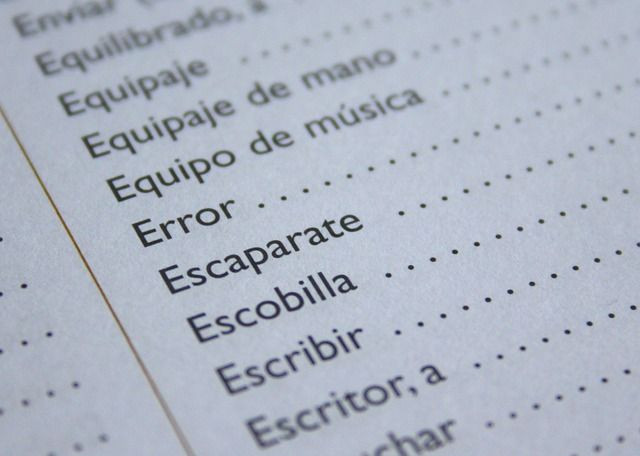Brain Scans Reveal Which Networks Help Us To Learn A Foreign Language

Most of us have tried to learn a foreign language, whether it's Spanish, French, or Italian, as a means of honing our analytical skills, listening skills, and memory. Understanding language is one of the most difficult functions the brain performs; ultimately, these functions allow us to recognize patterns of letters and words, to assemble them together, and comprehend their meaning. Now, a study published in the Journal of Neuroscience has found that the brain can reuse characteristics from our native or mother tongue when we learn a new language, and give us a grammatical boost.
Researchers from Nijmegen, a city in the Netherlands, aimed to find out what exactly happens to the brain during those initial hours and days spent learning a foreign language. They made up their own language, called “Alienese,” but with real structures to demonstrate how new linguistic information is processed in the same brain regions the participants’ used for their native language. Researchers used fMRI imaging to capture how the brain is able to memorize new words, learn how to put words together grammatically, and integrate them with existing linguistic knowledge.
Alienese consisted of a set of words like josa (woman), komi (man), and oku (to photograph). These words were combined in an order that either did or did not conform to Dutch word order, the participants' mother tongue. For example, both sentences, “Komi oku josa” (man photograph woman) and “Josa komi oku” (woman man photograph), mean, "The man photographs the woman." The former sentence conforms to Dutch word order (and English), but the latter follows a different grammatical pattern. Participants were asked to read sentences with familiar and unfamiliar word orders accompanied by pictures depicting the meaning.
The findings revealed when the unfamiliar words were repeated, brain activation increased within regions of the brain network — the left inferior frontal gyrus and posterior temporal cortex — known to be involved for use in their native language. Meanwhile, when the familiar word order was repeated, brain activation decreased in these regions, due to the grammatical overlap between the first (Dutch) and second (Alienese) language.
“Processing a known structure is easier for the brain the second time round. As a whole, our study shows that we seem to use the same brain areas for native and new language structures and that Alienese was in the process of being integrated into the participants’ existing language brain networks,” said Kirsten Weber, lead study author, in a statement.
The brain is able to reuse characteristics of the mother tongue when the language being taught is grammatically similar. So, if the word order differs from the mother tongue, the brain needs to build a new grammatical repertoire.
"The enhanced activity might reflect a brain mechanism to build and strengthen a neural network to process novel word order regularities," said Weber.
Once the bilingual brain is able to handle two languages at the same time, this sharpens the speaker’s skills for inhibition — a cognitive mechanism that disregards irrelevant stimuli, switching attention, and working memory. These are the skills that make up the brain’s executive control system, which is responsible for high-level thought, multi-tasking, and sustained attention.
Previous research has found the various ways the brain benefits when it comes to learning a second language. For example, young military recruits who were taught new languages increased the size of their brains’ hippocampus — the area of the brain responsible for forming, storing and retrieving memories. A bigger hippocampus can protect the brain against dementia symptoms, and further promote the growth of new neurons. Speaking two languages, especially if they’re similar, can also lead to more efficient monitoring systems in the brain.
So, it doesn't hurt to pick up a new language, no matter your age.
Source: Weber K, Christiansen MH, Petersson KM et al. fMRI Syntactic and Lexical Repetition Effects Reveal the Initial Stages of Learning a New Language . Journal of Neuroscience. 2016.



























